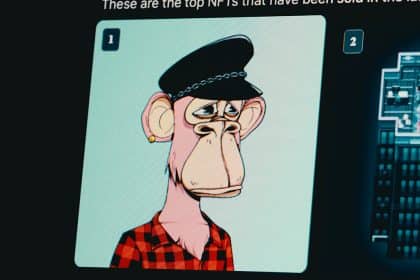In recent times, a collection of fake Bored Ape NFTs by Ryder Ripps has risen to outsell and outshine their real counterparts.
According to reports, a collection of fake Bored Ape (BAYC) non-fungible tokens (NFTs) outsold the authentic ones for a day. Sometimes referred to as “RR/BAYC” on listed sites, these wildly popular bogus digital assets are the brainchild of a creator known as Ryder Ripps.
Reports state that Ryder Ripps has a substantial following on social media. He uses this large following to facilitate the promotion of his fake Bored Ape NFTs. Furthermore, the bogus BAYC creator is an artist who is highly critical of the developer of the original versions – Yuga Labs. Known for his ingenious use of satire in the NFT community, Ryder Ripps refers to Yuga Labs as “Nazis”.The fake BAYC creator usually attempts to infuse elements of satire into his affinity for NFTs.
Fake Bored Ape NFT Creator Believes in NFTs
However, despite his apparent criticism of Yuga Labs, Ryder Ripps does not necessarily believe that NFTs are generally bad technology. In addition, despite being an artist, the fake Bored Ape creator does not sell any of his own art as digital nonfungibles. Instead, he also sells fake CryptoPunk NFTs in addition to the Bored Apes. Ryder Ripps seems to have made millions in revenue from doing so. Furthermore, like with the BAYC digital assets, Ryder Ripps’ bogus CryptoPunks are also slowly becoming more popular than their original counterparts.
Owing to the commercial success of Ryder Ripps’ bogus NFT collection, some questions arise as to the given authenticity status. Some people wonder if his fake NFTs should be considered “real” since they can outperform their real counterparts. In addition, due to their raving popularity, Ryder Ripps’ NFT collection has risen to become one of the most popular NFT collections of all time.
Fake NFTs
Although they have distinguishing unique codes, authentic NFTs can be difficult to tell apart from fake versions to casual observers. This is because it is tedious to sift through a laundry list of transactions to verify NFT authenticity. For instance, a potential Bored Ape buyer must study trades from the beginning to ascertain a token’s genuineness. Besides, going through a paper trail of transactions on Etherscan for a given NFT requires a certain level of adeptness on the user’s part.
However, for those who look to arm themselves with cut-and-dried guidelines for authenticating NFTs, Google proves to be their recourse. A simple visit to the giant search engine platform produces a list of straightforward principles to abide by. One thing to take note of is the price. An NFT might be fake if it is significantly less or more expensive than similar ones. Another point is that buyers should procure their NFTs from established and credible sites or marketplaces such as OpenSea. Furthermore, Google also states that NFT platforms with human moderators work best.
next